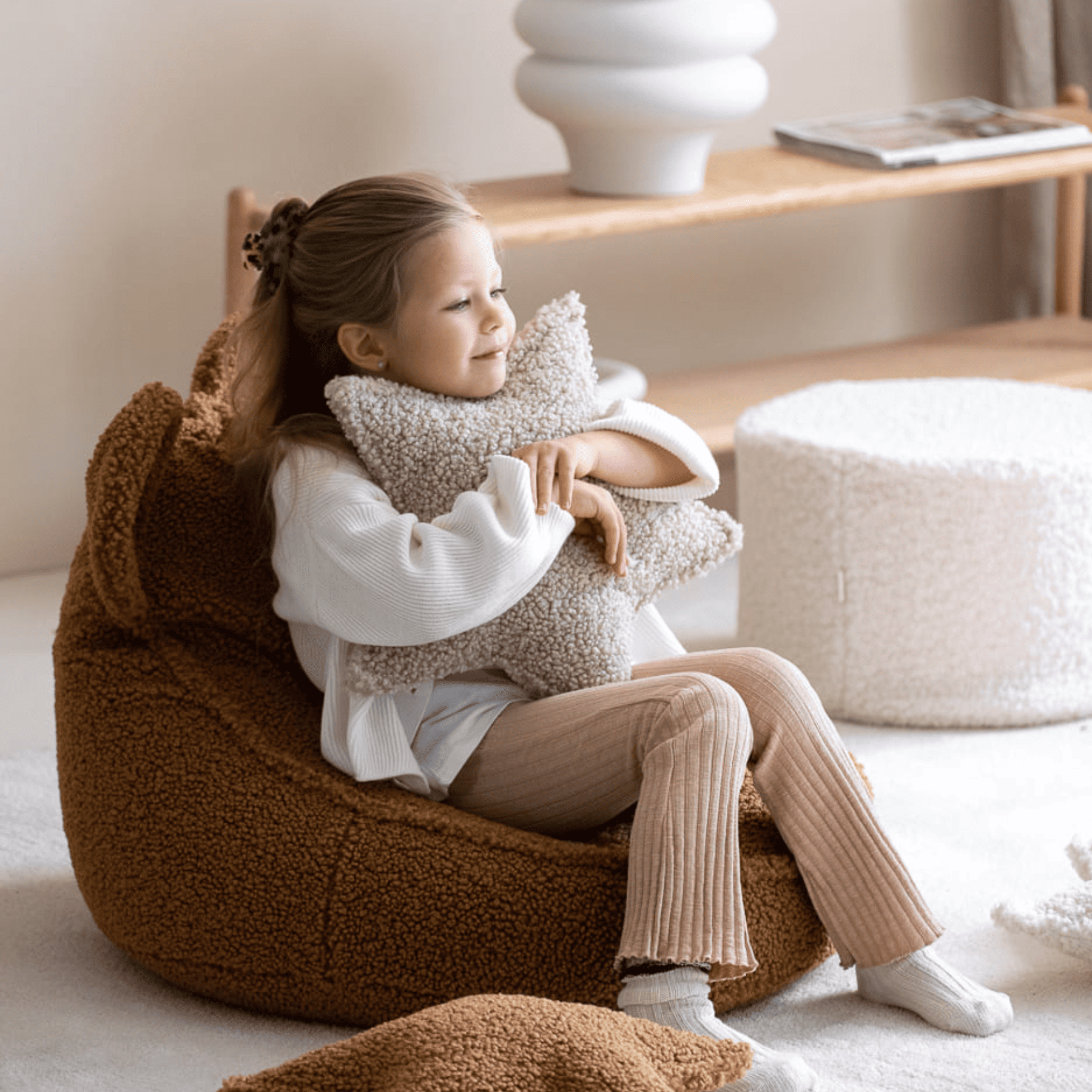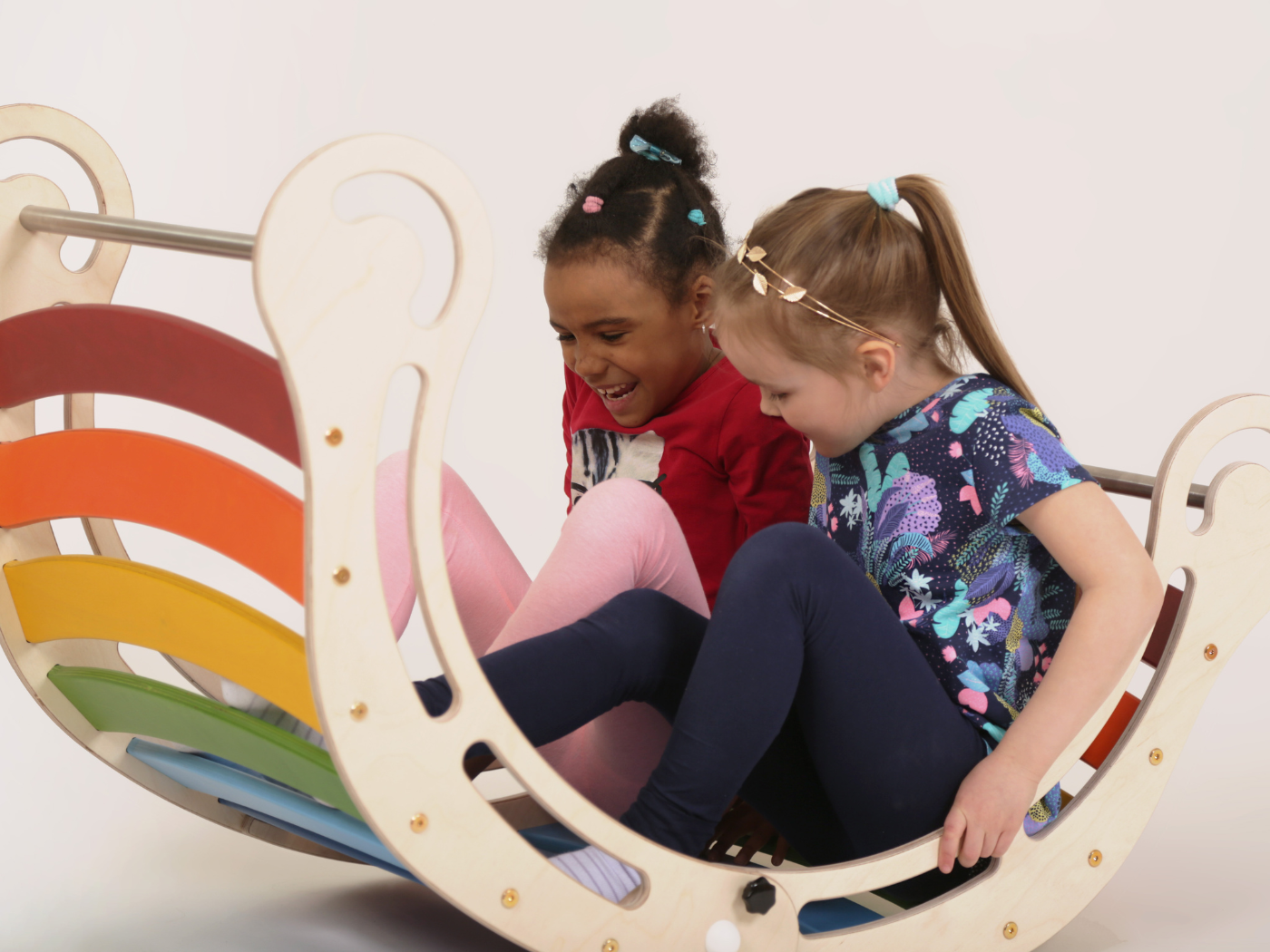Vous êtes-vous déjà demandé comment développer la motricité de votre enfant de manière amusante et efficace ? Dans cet article, nous vous montrerons pourquoi les triangles d'escalade , en particulier les triangles Pikler, sont parfaits pour cela et quels avantages étonnants ils offrent pour le développement des enfants. Découvrez comment ces équipements de jeu simples mais ingénieux peuvent non seulement être amusants, mais également soutenir les compétences importantes de votre enfant.
Le défi de promouvoir le développement de l'enfant
De nombreux parents sont confrontés au défi de trouver des jouets qui sont non seulement divertissants mais qui favorisent également activement le développement de leurs enfants. Le choix de jouets est vaste, mais lesquels d’entre eux soutiennent réellement les compétences motrices, cognitives et sociales de nos petits ?
Les triangles d'escalade , notamment ceux conçus selon la pédagogie Pikler, offrent ici une excellente solution. Ces équipements de jeu simples mais polyvalents favorisent le développement moteur naturel et l'indépendance des enfants d'une manière très appréciée par les éducateurs et les psychologues du développement.
Les triangles de Pikler : une clé du développement de l'enfant
Les triangles Pikler, nommés d'après la pédiatre hongroise Emmi Pikler, sont plus que de simples jouets. Il s’agit d’outils de développement soigneusement conçus, basés sur des découvertes scientifiques.
Développement moteur
Les triangles d’escalade favorisent le développement moteur des enfants de plusieurs manières :
-
Motricité globale : Grimper, s'équilibrer et glisser renforcent de grands groupes musculaires[1].
-
Motricité fine : Saisir les barreaux améliore la coordination œil-main[1].
-
Équilibre : L'équilibre à différentes hauteurs entraîne le sens de l'équilibre[1][4].
Développement cognitif
En plus du développement physique, les triangles d'escalade favorisent également le développement mental :
-
Résolution de problèmes : les enfants apprennent à relever les défis de manière autonome [4].
-
Perception spatiale : L'exploration de l'espace tridimensionnel favorise la pensée spatiale [2].
-
Créativité : Les enfants inventent leurs propres jeux et usages [4].
Développement socio-émotionnel
Les triangles d’escalade contribuent également au développement socio-émotionnel :
-
Confiance en soi : Les expériences d’escalade réussies renforcent l’estime de soi[4].
-
Autonomie : Les enfants apprennent à agir de manière indépendante et à prendre des décisions[1].
-
Interaction sociale : Jouer ensemble favorise la coopération et la communication[4].
Application pratique dans la vie quotidienne
Les triangles d'escalade peuvent être intégrés à la vie quotidienne de la famille de plusieurs manières :
1. Jeu libre : laissez votre enfant explorer le triangle de manière autonome. Il inventera intuitivement de nouveaux mouvements et jeux.
2. Parcours de mouvement : Combinez le triangle d'escalade avec d'autres éléments tels que des coussins ou des tissus pour des paysages de mouvement variés.
3. Jeux de rôle : Le triangle peut être intégré dans des scénarios de jeu imaginatifs comme une maison, une grotte ou un navire.
4. Espace de repos : En combinaison avec une couverture, le triangle devient un refuge douillet pour lire ou se reposer.
Montessori et Pikler : un duo parfait
Les philosophies de Maria Montessori et d'Emmi Pikler se complètent parfaitement lorsqu'il s'agit de triangles d'escalade :
|
Les deux approches soulignent l’importance de l’indépendance et du jeu libre pour le développement de l’enfant[3]. Les triangles d’escalade incarnent parfaitement ces principes et offrent aux enfants un environnement sécuritaire pour découvrir et développer leurs compétences.
Conclusion : Un outil de développement précieux
Les triangles d'escalade , en particulier les modèles conçus selon Pikler et Montessori, sont de véritables outils polyvalents pour favoriser le développement de l'enfant. Ils soutiennent non seulement la motricité, mais favorisent également la créativité, la confiance en soi et les compétences sociales.
Chez LeoBabys, vous trouverez une collection soigneusement sélectionnée de triangles d'escalade qui combinent tous ces avantages. Nos produits sont fabriqués à partir de matériaux durables de haute qualité et répondent aux normes de sécurité les plus élevées. Découvrez dès maintenant notre gamme et offrez à votre enfant la possibilité de grandir et d'apprendre en jouant !
Sources :
[1] https://www.bakip-linz.at/pikler-dreieck-als-teil-des-kindlichen-lernumfelds/
[2] https://www.dueren-magazin.de/ratgeber/ratgeber-gesundheit/17288-montessori-dreiecke-der-ideale-heimtrainer
[3] https://www.bakip-linz.at/pikler-paedagogik-der-ansatz-hinter-dem-pikler-dreieck/
[4] https://www.begabtenzentrum.at/vorteile-pikler-paedagogik-fuer-kinder-und-deren-entwicklung/
[5] https://www.bakip-linz.at/pikler-dreieck-im-kontext-unterschieder-erziehungsstile/
[6] https://www.bakip-linz.at/langfristige-vorteile-des-pikler-dreiecks-in-der-kindlichen-entwicklung/
[7] https://www.spielspecht.de/pages/pikler-dreieck



